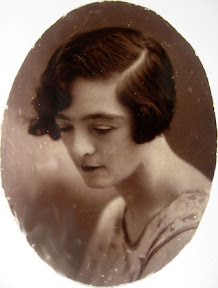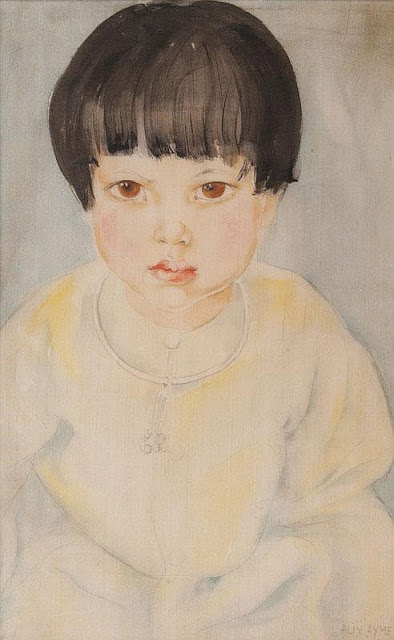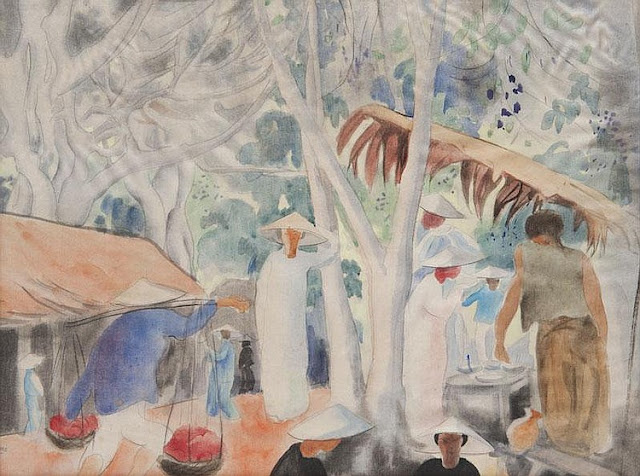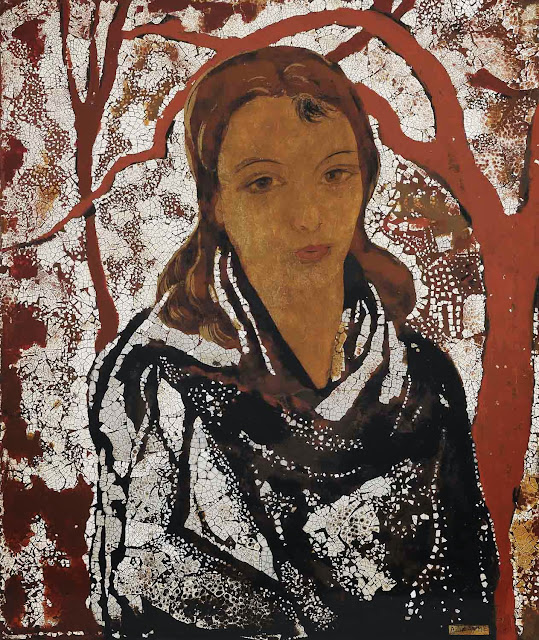History of Art:Alix Aymé (1894-1989)
Alix Aymé (1894-1989)
Аликс Эме-Живописец, график, иллюстратор, декоратор, монументалист.
Ученица Мориса Дени,близкий друг Леонарда Фуджиты

Alix Angèle Marguerite Hava, born in Marseille in 1894, studied drawing and music at the Conservatory of Toulouse. A prodigy, gifted in music as well as art, at the age of fifteen she won a gold medal in piano and considered a musical career before becoming a painter.
After her graduation from the Conservatory, she moved to Paris where she became a pupil, and then a colleague, of the important Nabi painter Maurice Denis.
In 1910 she collaborated with Denis on the decoration of the Théâtre des Champs-Élysées . Later she worked in the Studios of Sacred Art founded by Maurice Denis and Georges Devallières in 1919.
L'Annonciation



She married in 1920 and went to Shanghai with her first husband, Professor Paul de Fautereau-Vassel, who was posted to the Franco-Chinese Mission there. In 1921, living then in Hanoi, she took part as a staff artist in several scientific expeditions to China. In 1925 she was made a professor and taught drawing at the French Lycée in Hanoi. In 1926, the artist and her husband returned to Paris where their son, Michel, was born. While in Paris, she was commissioned to do the illustrations for a French edition of Rudyard Kipling’s Kim, which she did using drawings she had made on a visit to Ceylon. When Fautereau-Vassel decided to remain in France, his wife, taking her young son with her, returned to the life she had created for herself in Asia.
Maternité. Laque or et coquille d'oeuf

In 1930, she had an exhibition at the Galerie Portal in Saigon, and then settled in Luang Prabang (Laos) where she became close to the ruling family and was commissioned to do a series of large murals in the Royal Palace (official name: Haw Kham, and today a national museum.). The murals in what was the King’s reception room depict everyday life in Laos. According to the Royal Palace Museum web site, each of the murals “…is intended to be viewed at a different time of day, depending on the light that enters the windows on one side of the room, which matches the time (of) day depicted.” The murals are considered a national treasure. Unfortunately, there are no reproductions of the murals as it is forbidden by the government to photograph them. In 1931, Aymé moved back to Hanoi and was named professor at the Lycée Albert Sarraut. There she taught the ancient Vietnamese art of lacquer work which she had earlier mastered.
Souvenir d’Indochine, 1930s
Lacquer, gold lacquer and leaf gold on glass

In July of that year she returned to Paris and married Colonel Georges Aymé, who later became General Aymé, Commander of the French Army in Indochina. Maurice Denis was one of the witnesses at her marriage. Her husband’s brother, Marcel Aymé, became one of the most celebrated French novelists of the 20th century after the artist helped launch his career by introducing him to one of her friends at the publishing house Gallimard. While in Paris, she had an exhibition at the Galerie Druet and was invited to work on the important Colonial Exhibition to which she contributed a number of works done in lacquer. In 1935 there was a large exhibition of her work in Saigon.
Le marché à Hanoi

Femme endormie. Peinture or et laque sur panneau.

La Liseuse près du Village Annamite

Portrait d'une Jeune Fille avec des Fleurs,laque / panneau

Le vase rouge ,1940's,laque / panneau

* In March 1945, the Japanese captured the Aymes and their two sons. The eldest, Michel, died in an internment camp. Ayme’s two portraits of Michel, “Portrait of a Young Man Lost in Thought (Michel)” and “Michel/Christ,” create a startling contrast.

A Portrait of François Facing Right
Charcoal drawing

***
Portrait d'enfant. Aquarelle sur soie

***
Scène de marché à Hanoi. Aquarelle sur soie

During her years in Asia, Aymé traveled extensively in Indochina, India, and Ceylon. She also visited and painted in China, Japan, and Korea. When she returned to live in Paris in 1945, she was commissioned to do the mural decorations of a chapel in Luc-sur-Mer (Calvados).
During this period she became a close friend of, and worked with, the painter Foujita.
In 1948 she was given an exhibition at the Galerie Moullot in Paris and moved into an apartment/studio in the Porte de St. Cloud, where she continued to live and work after the death of her husband in 1950. That same year, she was given an exhibition in Paris at the Galerie de la France d’ Outremer on the rue de la Boétie, and published an article on the art of lacquer in the journal Tropique. In 1952, there was an exhibition in Florence of her works in lacquer, which were also shown in 1952 in Paris in rue de la Boétie. For the journal Pax Christi, in 1960 Aymé wrote and illustrated Paul et Kao au Laos, a story of seven episodes drawn from her experiences in Laos. In 1961 she was given an exhibition at the Galerie Rauch in Monaco. In 1962, Aymé went to live and paint for eight months in Brazzaville in the Congo, the final journey of a life spent largely in travel, exploration, painting and drawing. Alix Aymé died on her 95th birthday while putting the finishing touches to one of her lacquer pieces.
Paysage. Peinture or et laque sur panneau

Paysage de sous bois. Peinture or et laque sur panneau

***
Portrait de jeune femme

Portrait d'une Femme Assise dans une Robe Rouge et Blanche

***
Nature morte. Huile sur toile contrecollée

Her work is found in a number of public collections, including the Cabinet des Dessins of the Louvre and the Musée des Années Trente in Paris, the Musée des Beaux-Arts in La Rochelle, and the Royal Palace in Luang Prabang. Her first American museum exhibition was held March - September 2012 at the Evergreen Museum and Library of Johns Hopkins University in Baltimore.Filming has begun on a documentary film about her life and art.
Jeune femme au bouquet -Peinture sur panneau de laque

Bibliography: Bénézit, E. Dictionnaire Critique et Documentaire des Peintres, Sculpteurs, Dessinateurs et Graveurs, Gründ, Paris, 1999. Menonville, Corinne de, La Peinture Vietnamienne, une aventure entre tradition et modernité, Arhis, Castillon, 2003. Paris-Hanoi-Saigon, catalogue of the exhibition, Pavilion des Arts, Paris, 1998
This entry was originally posted at http://elle-belle.dreamwidth.org/1769240.html. Please comment there using OpenID.